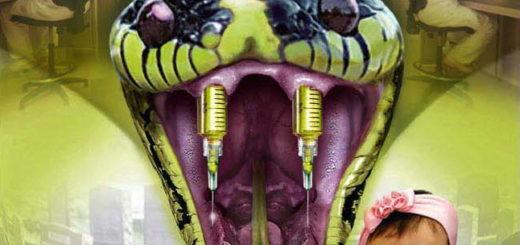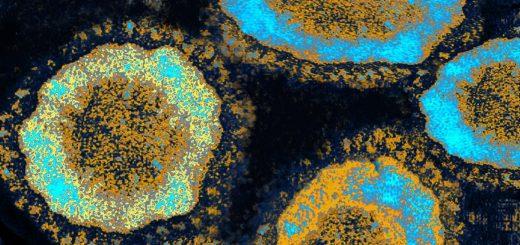Very Good Article by a Real Doctor!
Documentary About Your Body’s Chemical Burden
By Dr. Mercola
More than 80,000 synthetic chemicals surround you every day. Synthetic chemicals are in your air, food, water, and in most of the products you use — many going straight into your body or your child’s body, even before birth.
Your cells interact with about 200 industrial chemicals every day. Until recently, modern science really didn’t grasp what this relentless exposure could mean for your health, but that’s changing.
Global disease rates are on the rise. Most children today will develop a chronic illness of some kind, whereas that was not the case a few decades ago.
Theories about causation abound, yet the issues are complex and often muddied by the maneuvering of political and corporate interests. Many are confused about what to believe.
“Unacceptable Levels”1 is a documentary about the chemicals in your body, how they got here, and what you can do about it. The filmmaker travelled extensively to interview top minds in the fields of science, advocacy, and law.
The film examines the aftermath of the 1940s chemical revolution through the eyes of filmmaker Ed Brown, a father seeking to understand the world in which he and his wife are raising their children.
This film opens up the conversation about these toxic burdens so you can make informed decisions for yourself and your family, and challenge the industry, the government, and each of us to take action toward changing the system.
Casualties of the Chemical Revolution
The chemical revolution was a direct result of World War II, with innovations stemming from the war effort. Industry was booming, and Americans began to demand that technology focus on making home life easier and more convenient.
When the war ended, scientists were snapped up by private industry. Petroleum products were at the core of most post-war research, as it was cheap and abundant, and the plastic industry simply exploded.
We had no idea that the chemicals in petroleum-based products could make their way inside our bodies, much less how this could affect us. The problem today is, you’re not exposed to just one chemical — you live in a sea of chemicals regardless of how careful you are.
There’s convincing evidence showing that prenatal exposure to certain industrial chemicals may lead to abnormal fetal development, diminished intelligence, behavior problems, infertility, abnormal sexual maturation,metabolic dysfunction, and cancer.
Even though many of these environmental chemical levels are low, they add up, and it’s the cumulative effect over time you must pay attention to. Tiny amounts can have disastrous effects, acting like drugs but in ways you can’t control.
For example, the birth control pill works at parts per billion, and many of these synthetic chemicals are equally potent. There are also “combination effects” to consider. Some interpret the lack of proof of harm as evidence of safety — but this is a dangerous mistake.
Mixing Chemicals May Turn ‘Safe’ Chemicals into Carcinogens
One recent assessment2 by the National Food Institute at the Technical University of Denmark found that even small amounts of chemicals when combined can amplify each other’s adverse effects.
You have multiple types of chemicals in your body at any one time. Neglecting to consider their interactions is like a physician prescribing a drug without asking you what other drugs you’re taking.
One in five cancers are thought to be caused by exposure to environmental chemicals. According to a recent study published in the journalCarcinogenesis,3 a mixture of common chemicals may trigger cancer — and this includes chemicals deemed “non-carcinogenic” on their own.
By acting on various pathways, organs and organ systems, cells, and tissues, the cumulative effects of non-carcinogenic chemicals can act in concert to synergistically produce carcinogenic activity.
This fact turns conventional safety testing on its ear, as carcinogenicity testing — what little is actually done — is performed on isolated chemical agents.
Fluoridation: Toxic Waste Added in Your Water
“Fluoridation is the greatest case of scientific fraud of this century, if not of all time.” – Robert Carton, PhD, former EPA scientist
Part of the problem of toxicity today is that industry has turned its toxic waste into a profit center — industrial waste has its own industry. Several examples are covered in the documentary, including fluoridation.
In 1945, fluoride was given the green light by the US government following the release of a large amount of hydrogen fluoride from DuPont’s Deepwater, New Jersey plant. A massive quantity of toxic hydrogen fluoride was produced as a byproduct of industry, and its disposal was an inconvenient and costly problem.
In order to avert lawsuits, industry came up with the clever idea of revamping fluoride’s image — they told people fluoride was good for their teeth and began adding it to public water supplies. Initially, fluoride waste from the aluminum industry is what went into drinking water. But by the late 1940s, they’d found a cheaper source — the phosphate industry, a byproduct of making fertilizer.
Instead of paying to properly dispose of this toxic pollutant, the agriculture industry now earns $200 to $300 million a year by selling fluoride to water treatment plants, and it’s “magically” no longer a pollutant — unlike when it comes out of a smokestack.
If asked, most dentists will tell you pharmaceutical grade fluoride (sodium fluoride) is what’s added to drinking water, but that’s not correct — 90 percent is hydrofluorosilicic acid, also known as HFS or FSA,4 a waste product of the phosphate industry.
Fluoridation is linked to ADHD, hypothyroidism, endocrine disruption, neurotoxicity, and IQ damage in children, as well as dental fluorosis.
The Department of Health and Human Services (HHS) recently lowered the recommended level of fluoride in water from 0.7 to 1.2 milligrams per liter (mg/L) of water to 0.7 mg/L, to help prevent fluoride overexposure. However, research suggests this level may still pose a serious health risk to many, including children and the elderly.
Turning Chemical Weapons into Pesticides
Similarly, pesticides were introduced after WWII when certain companies were looking for new ways to market surplus war chemicals. These poisons were originally designed to kill people, not bugs. After the war, they decided to try using them to kill bugs… and it worked! Of course, no real safety testing was ever done — the US Environmental Protection Agency (EPA) didn’t even exist yet.
Every year now, 1.2 billion pounds of pesticides (mostly glyphosate) are spread over crops, contaminating the soil, polluting the water, and making their way into the food chain — the top of which is us. In regards to the dangers these agricultural chemicals pose, regulators and politicians hear much more corporate propaganda than real science… the mantra being, “not using pesticides will lead to food prices tripling, food shortages and starving families,” none of which is true.
Our food system is highly dependent on oil and industrial waste — waste in search of a dumping ground, and the dumping ground is you. Did you know that the food you eat today may have been grown in toxic sludge? Sludge is a highly toxic waste product of water treatment, containing every noxious substance removed during the water purification process — medical waste, human waste, pathogenic organisms, flame retardants, heavy metals — you name it, it’s there.
Water treatment plants don’t detoxify the sludge. They simply filter all of that nastiness out of your water, and the remnant is a thick slop of toxic sewage. But what to do with the slop? The EPA says it’s too toxic to put in landfills or incinerate, but they say it’s okay to dump it on food crops, as there’s a bit of nitrogen in the mix.
Therefore, similar to the rebranding of fluoride waste as a dental health product, sewage sludge magically becomes redefined as fertilizer and is used on food crops. Upon harvesting from this sludge-soaked soil, the food is shipped off for further adulteration by the processed food industry.
Further Chemical Assaults from Food and Cosmetics
Ninety percent of food is chemically processed today with flavorants, colorants, texturants, and preservatives — and typically loaded with sugar and high fructose corn syrup. Between processing, agricultural chemicals and toxic sludge, you can understand how a multitude of chemicals can accumulate in your body to damage your health over time.
There is virtually no public transparency or oversight for food safety testing. A dangerous loophole in the 1958 Food Additives Amendment allows food companies to add chemicals to their products without sharing safety information with the US Food and Drug Administration. Manufacturers are even allowed to “self declare” that they believe their ingredients are safe, and if they self declare, they don’t even have to provide the government with a complete list of ingredients.
Just as with other chemicals, the effects of food chemicals are additive — their effect is much greater when used in combination. The laxity of food additive regulation is surpassed only by that of personal care products, including cosmetics, household products, toys, bedding, clothing, and the like.
The average woman in the US uses 12 personal care products a day, containing 168 different chemicals. Cosmeticsmanufacturers don’t have to disclose the ingredients in their products. The vast majority contains chemicals either known to be toxic, suspected to be toxic, or whose effects are unknown because there’s been no testing. It’s unregulated because the industry prefers it that way; regulation would cost them money. If they think an ingredient might be harmful, they don’t have to remove it — they can just avoid listing it.
Chemical Lobby Seeking Protection by Gutting Chemical Regulations
According to the documentary, 85 percent of new chemicals are approved for market with absolutely no health and safety information. Of the 82,000 chemicals on the market today, US EPA has successfully taken action on exactly five of them. Strong scientific evidence shows that exposure to these chemicals contributes to cancer, reproductive abnormalities, early puberty, and a host of other endocrine, neurological, and metabolic problems.
On June 23, 2015, the House of Representatives passed the Vitter-Udall bill which updates the 1976 Toxic Substances Control Act.5 A companion bill (S.697) is slated to come before the US Senate sometime in July. Together, the measures would require EPA to start studying the health effects of about 64,000 different chemicals. While that sounds like a good idea that’s well overdue, things are not as rosy as they appear.
It was discovered that the draft of this bill was co-authored by the American Chemistry Council, a trade organization and lobbyist for the chemical industry.6,7 One of many problems with the bill was that it actually restricts states’ ability to limit or ban certain chemicals. To address apparent conflicts of interest, Senators Barbara Boxer (D-Calif) and Edward Markey (D-Mass) introduced a revised version of the bill,8 which included more stringent provisions and did not preempt state laws.
Alas, in the end, it was the industry-backed and co-authored bill that won the House vote. In response, president of the Environmental Working Group Ken Cook noted:9
“We commend the House for its focus on the need to overhaul chemical policy, but this piece of legislation will not do the job. It tips much too far in favor of an industry in serious need of regulation.”
Another point to consider is this: earlier in June a House panel approved a bill that cuts EPA funding by nine percent10 — a whopping $718 million — in 2016. This is a significant reduction, especially when you consider EPA’s funding has already been reduced by 20 percent since 2011. Considering the EPA’s dwindling funding, it really raises questions about the agency’s ability to properly test tens of thousands of chemicals in a timely fashion.
Tips for Avoiding Toxic Chemicals
It’s clear that the US government is falling short when it comes to protecting you from potentially devastating toxic chemicals. Within such a dysfunctional system, you are the best one to keep your family safe. Although no one can successfully steer clear of ALL chemicals and toxic agents, you can minimize your exposure by keeping the following principles in mind.
Eat REAL FOOD, ideally that is locally grown, fresh, and organic. Processed and packaged foods are a common source of chemicals such as BPA and phthalates. Wash fresh produce well, especially if it’s not organically grown. Choose grass-pastured, sustainably raised meats and dairy to reduce your exposure to hormones, pesticides, and fertilizers. Avoid milk and other dairy products that contain the genetically engineered recombinant bovine growth hormone (rBGH or rBST). Rather than eating conventional or farm-raised fish, which are often heavily contaminated with PCBs and mercury, supplement with a high-quality krill oil, or eat fish that is wild-caught and lab tested for purity, such as wild caught Alaskan salmon. Buy products that come in glass bottles rather than plastic or cans, as chemicals can leach out of plastics (and plastic can linings), into the contents; be aware that even “BPA-free” plastics typically leach other endocrine-disrupting chemicals that are just as bad for you as BPA. Store your food and beverages in glass, rather than plastic, and avoid using plastic wrap. Use glass baby bottles. Replace your non-stick pots and pans with ceramic or glass cookware. Filter your tap water for both drinking AND bathing. If you can only afford to do one, filtering your bathing water may be more important, as your skin absorbs contaminants. To remove the endocrine disrupting herbicide Atrazine, make sure your filter is certified to remove it. According to the Environmental Working Group (EWG), perchlorate can be filtered out using a reverse osmosis filter. Look for products made by companies that are Earth-friendly, animal-friendly, sustainable, certified organic, and GMO-free. This applies to everything from food and personal care products to building materials, carpeting, paint, baby items, furniture, mattresses, and others. Use a vacuum cleaner with a HEPA filter to remove contaminated house dust. This is one of the major routes of exposure to flame retardant chemicals for you, your children and your pets. When buying new products such as furniture, mattresses, or carpet padding, consider buying flame retardant-free varieties, containing naturally less flammable materials, such as leather, wool, cotton, silk, and Kevlar. Avoid stain- and water-resistant clothing, furniture, and carpets to avoid perfluorinated chemicals (PFCs). Make sure your baby’s toys are BPA-free, such as pacifiers, teething rings, and anything your child may be prone to suck or chew on — even books, which are often plasticized. It’s advisable to avoid all plastic, especially flexible varieties. Use natural cleaning products or make your own. Avoid those containing 2-butoxyethanol (EGBE) and methoxydiglycol (DEGME) — two toxic glycol ethers that can compromise your fertility and cause fetal harm. Replace your vinyl shower curtain with a fabric one. Replace feminine hygiene products (tampons and sanitary pads) with safer alternatives. Switch over to organic toiletries, including shampoo, toothpaste, antiperspirants, and cosmetics. EWG’s Skin Deep Cosmetics Database11 can help you find personal care products that are free of phthalates and other potentially dangerous chemicals. Look for fragrance-free products. One artificial fragrance can contain hundreds — even thousands — of potentially toxic chemicals. Avoid fabric softeners and dryer sheets, which contain a mishmash of synthetic chemicals and fragrances.
















